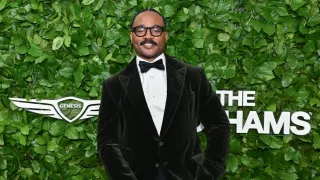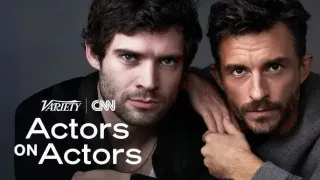July 10, 2020
Trump Postpones New Hampshire Rally Over Tropical Storm
Jonathan Lemire and Bill Barrow READ TIME: 5 MIN.
President Donald Trump is postponing his planned rally Saturday in New Hampshire, the White House said, citing a tropical storm threatening parts of the mid-Atlantic and southern New England.
Press secretary Kayleigh McEnany told reporters traveling to Florida with the president on Friday that the event – slated to be held in an aircraft hangar in Portsmouth – would be delayed by a week or two. She cited the threat of Tropical Storm Fay, which is expected to bring rain to the region.
"The rally scheduled for Saturday in Portsmouth, New Hampshire has been postponed for safety reasons because of Tropical Storm Fay," Trump campaign communications director Tim Murtaugh said in a statement. "It will be rescheduled and a new date will be announced soon."
The event was to mark Trump's first political rally after a multiweek hiatus caused by a nationwide surge in coronavirus cases and after his planned comeback in Oklahoma turned into a debacle.
Trump, trailing in the polls, is eager to signal that normal life can resume despite a rampaging virus that has killed more than 130,000 Americans. He is to hold his first in-person fundraiser in a month on Friday in Florida.
The Portsmouth rally was scheduled after aides spent weeks studying what went wrong in Tulsa three weeks ago. It was billed as a massive, defiant return to the political stage but instead produced a humiliating sea of empty seats and questions about the campaign's ability to attract people to large events in a pandemic.
Trump's Friday fundraiser takes him to terrain where COVID-19's surge threatens his hold on a must-win state and raises questions about Republican aims to hold their nominating convention in Jacksonville next month. Trump will also hold a small event supporting the people of Venezuela and visit U.S. Southern Command in Miami to highlight a reduction in the flow of illegal drugs into the United States, though much of the credit belongs to the pandemic, which has paralyzed economies, closed borders and severed supply chains.
It was unclear how many people would attend the New Hampshire rally, campaign officials acknowledged. Conceding that another sparse crowd would raise questions about the future of Trump's rallies, the campaign has taken additional steps to make attendees feel safe.
Unlike the one in Tulsa, which was held indoors where the virus more easily circulates, the rally in Portsmouth was to be partially outdoors, held in an airplane hangar open on one side with the crowd spilling out onto the tarmac before Air Force One.
"All of Donald Trump's rallies and all of his events are electric," said campaign spokesperson Hogan Gidley. "The president wants to go in there and talk about all the accomplishments he's done in his first term and how he's made people's lives better."
Moreover, while masks were distributed in Tulsa, few rallygoers wore them after weeks of Trump deriding their use. This time, the campaign has strongly encouraged their use.
The venue will be significantly smaller than the cavernous Tulsa arena, and aides had deliberately set lower expectations for crowd size. Before the Oklahoma event, which spurred days of protests, campaign manager Brad Parscale boasted that a million ticket requests had been received. The Tulsa fire marshal said 6,000 people attended.
New Hampshire has had a relatively low number of COVID-19 cases, while those in Oklahoma were rising before Trump arrived. Oklahoma health officials said the rally and accompanying protests "likely contributed" to a surge in infections in the city. Several campaign staffers and Secret Service agents tested positive for the virus.
Despite the risks, the Trump campaign believes it needs to return to the road, both to animate the president, who draws energy from his crowds, and to inject life into a campaign that's facing a strong challenge from Democratic candidate Joe Biden.
"The campaign feels he needs to be out there, but every time he speaks in front of crowds, there is a chance the virus spreads," said Julian Zelizer, a presidential historian at Princeton University. "But it's just as bad if he comes out to an empty crowd, which could be a sign that people are not enthused or they are scared."
On Friday, Biden pointed to Florida's rising coronavirus cases, saying, "It is clear that Trump's response – ignore, blame others, and distract – has come at the expense of Florida families."
The choice to hold the rally in New Hampshire, where the president is trailing significantly, in part reflects the current lack of options, said four campaign officials and Republicans close to the endeavor who spoke on condition of anonymity because they weren't authorized to publicly discuss internal deliberations.
Battleground states with Democratic governors, such as Michigan and Pennsylvania, have indicated they wouldn't waive health regulations to allow large gatherings, though the campaign will be willing to legally contest that in time, according to the officials. New Hampshire Gov. Chris Sununu, a Republican, may meet with Trump on Saturday but has said he won't attend the rally.
Advisers said local officials in other states will be watching how Saturday's event goes.
The rally comes amid persistent questions about Trump's handling of the pandemic and the acceleration of his use of racial tensions as a reelection weapon.
Part of Trump's inflammatory appeal has been a defense of Confederate symbols, which he has twinned with a defense of the Founding Fathers. There has been talk of displaying statues of American heroes at the rally, two campaign officials said. Aides also previewed a renewed attempt in the coming days to link Biden to the liberal wing of his party, including Reps. Alexandria Ocasio-Cortez of New York and Ilhan Omar of Minnesota.
Trump narrowly lost New Hampshire in 2016. Before the pandemic, the state was on a short list along with Minnesota and New Mexico that the Trump campaign hoped to flip from blue to red. Advisers believe the states could be in play again if the economy rebounds.
The Trump campaign has also been eager to return to the road to draw a contrast with Biden, whom it's painted as being marooned in the basement of his Delaware home. Biden has traveled by car around Delaware or nearby Pennsylvania for a handful of events, and, in a contrast to Trump, wears a mask and observes social distancing guidelines.
Biden has been unapologetic about following recommendations from public health officials amid the pandemic. He's conducted regular online fundraisers and campaign events from makeshift television studios at his house, while sitting for remote video interviews with national networks and local stations in battleground states. He holds regular telephone, video and some in-person meetings with advisers.
___
Barrow reported from Atlanta.






